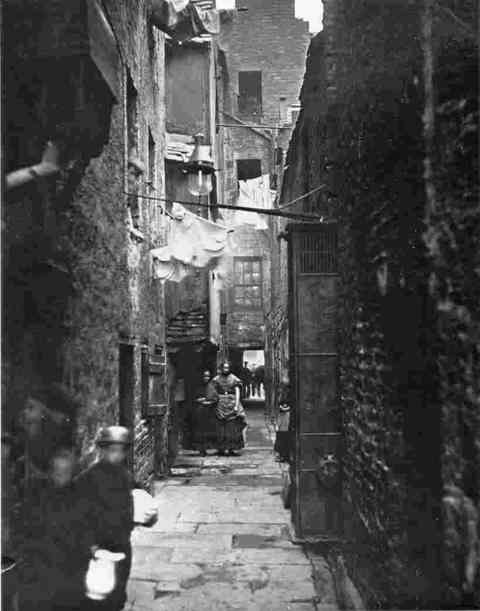| Edgar Degas "Absinthe Drinker" 1880's |
| Brassai "Cafe Scene" 1930's |
Brassaï once summed up his photography by saying:
"Basically, my work has been one long reportage on human life." (Here)
Brassai photographed real life people as he wanted to raise awareness of the problems that people were going through. His photograph Cafe Scene takes influence from the painting by Edgar Degas who shows a French woman in a bar drinking Absinthe,
Brassai was one of the first photographers to photograph at night and because of this he helped to shape photography by showing a new side of the city that was not present in other photographers works, people such as hooligans and prostitutes. At the time he was photographing exposures were slow as photography was still relatively new so he used a flash gun to illuminate his scenes and estimated his exposures by trial and error.
Jacob Riis
 |
| Jacob Riis "Bandits Roost" 1890 |
 |
| Jacob Riis "5 Cents a Spot" 1890 |
He shows how the lower classes in New York lived in poverty. Riis was a social activist and he wanted to bring light to the conditions that many people lived in, in many cases the poor were blamed for the conditions that they lived in however Riis thought that it was not their fault and they had no choice.
In the photograph "5 Cents a Spot" the men have all paid 5 cents just to be able to sleep on the floor in the crowded house. He has captured them in a candid moment as he used a new piece of technology which was being developed: the flash gun.
http://www.moma.org/learn/moma_learning/jacob-august-riis-lodgers-in-bayard-street-tenement-five-cents-a-spot-1889
Thomas Annan
 |
| Thomas Annan "Glasgow Close" 1867 |
Thomas Annan photographed around Glasgow to show the slums before the council refurbished the areas. His work generally focused on details of the Wynds and the Tenements, his work did not focus on the people who lived in these conditions but more on showing the details in the area such as washing lines and the gutters.
http://www.ngaiopress.com/highslum.htm
http://special.lib.gla.ac.uk/exhibns/month/Mar2006.html
Charles Sheeler
 |
| Criss–Crossed Conveyors, River Rouge Plant, Ford Motor Company |
He photographed within the Ford plant for six weeks between 1927/28, his works focused on the impressive machinery and the American ideals of power and revolution. The project shows how times are changing in technology as humans working on a farm has evolved into machines running themselves in factories.
These works influenced some of his later works that he created with different media.
http://www.metmuseum.org/toah/works-of-art/1987.1100.1
The course of urban photography is an ever changing one as attitudes are changing as times change and technology becomes more advanced. Urban photography has changed from the photographers interacting with the people they were photographing into the photographer removing the human element to create a chilling and formidable perspective on what the future could become as we as humans become dependant on machines.
No comments:
Post a Comment